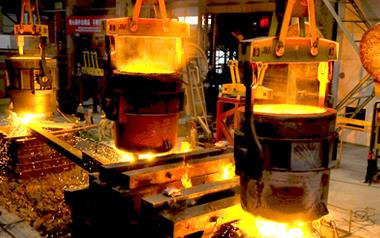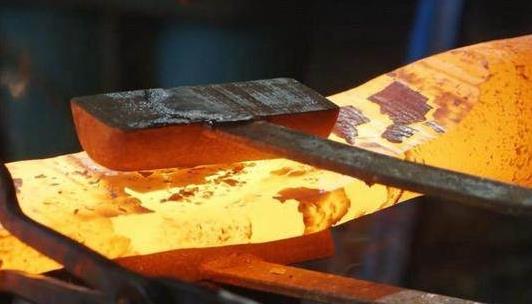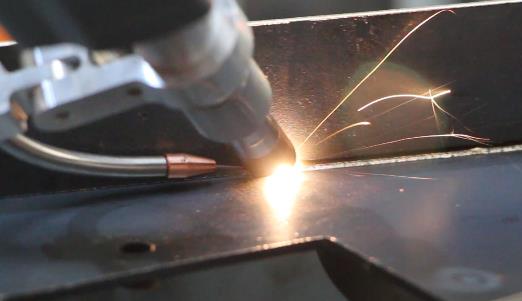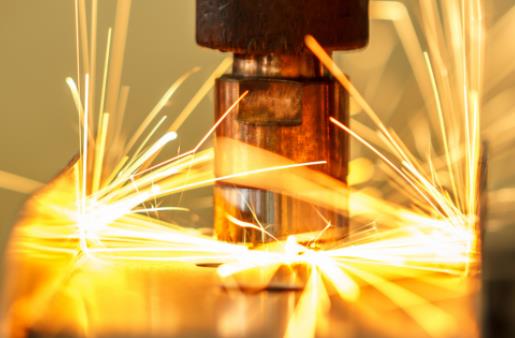Metal materials are essential in modern industry due to their exceptional mechanical, physical, and chemical properties. These materials are widely used across various sectors, and the processes involved in shaping and forming metal parts are critical for producing high-quality components. Each metal manufacturing technique has its unique advantages, so it is crucial to select the most suitable method based on specific production needs. This article explores five key metal manufacturing processes, their classifications, and applications.

1. Casting Process
1.1 Overview
Casting is a process in which metal is melted into a liquid state and poured into a mold to solidify. This method is known for its cost-effectiveness and ability to produce complex parts, especially those with intricate geometries. While casting is highly versatile, it may compromise precision and surface quality when compared to other techniques.
1.2 Types of Casting
- Sand Casting: The oldest and most traditional casting method, sand casting uses sand molds to form metal parts. It is ideal for small-batch production and parts with complex shapes.
- Metal Mold Casting: Metal molds offer excellent thermal conductivity, fast cooling rates, and higher dimensional accuracy. This technique is widely used for mass production of parts like engine blocks.
- Investment Casting (Lost Wax Casting): Investment casting is a precision method that involves creating a wax model of the part, coating it with a refractory material, and then melting the wax. It is used to produce high-precision, small-batch parts such as turbine blades.
1.3 Applications
Casting is commonly used in automotive engine blocks, ship propellers, and aerospace structural components.

2. Forging Process: Strengthening Metal Components
2.1 Overview
Forging uses mechanical force under high pressure to shape metal, improving its internal structure and making the final part stronger and more durable. Forged parts are ideal for applications that require high strength and fatigue resistance.
2.2 Types of Forging
- Open-Die Forging: This method shapes metal without the use of molds, making it suitable for producing large components such as turbine rotors and heavy shafts.
- Closed-Die Forging: Metal is placed in a mold to create precise shapes and high-quality surfaces, ideal for producing parts like gears and rods.
- Ring Rolling: Used for producing ring-shaped components, typically in aerospace and heavy equipment applications.
2.3 Applications
Forging is critical in industries such as automotive, aerospace, and energy. Automotive components like crankshafts, gears, and suspension parts rely on forging to ensure strength. In aerospace, forging is used to create engine parts and turbine blades that must withstand extreme conditions.

3. Stamping Process: Efficient Production of Metal Parts
3.1 Overview
Stamping is a high-speed process that uses dies to shape flat metal sheets into specific forms. This process is highly efficient and ideal for mass production of simple components with high precision.
3.2 Types of Stamping
- Blanking: This involves cutting metal sheets into specific shapes and sizes, suitable for parts like washers and car body panels.
- Bending: Metal sheets are bent into desired angles for parts like car doors and frames.
- Deep Drawing: Used to produce hollow parts such as containers, car parts, and household appliances.
- Forming: More complex processes that change the shape of the metal through methods like flaring, shrinking, and expanding.
3.3 Applications
Stamping is widely used in automotive, electronics, and appliance manufacturing. For instance, automotive body parts like hoods, fenders, and doors, as well as refrigerator panels and washing machine casings, are produced using stamping techniques.

4. Welding Process: Joining Metal Parts
4.1 Overview
Welding is the process of joining two or more metal parts by applying heat, pressure, or both. It is a key method for creating strong, permanent connections in metal structures. Welding methods vary in complexity, with each technique offering unique advantages for different materials and joint types.
4.2 Types of Welding
- Fusion Welding: This method melts the base metal to form a bond, commonly used in arc welding, MIG, and TIG welding.
- Pressure Welding: Metal is joined under pressure without melting, such as in spot welding and seam welding.
- Brazing: A process where a filler metal is used to join metal parts without melting the base material. It is ideal for joining dissimilar metals.
4.3 Applications
Welding is widely used in construction, automotive, aerospace, and energy industries. For example, steel beams in buildings, airplane fuselages, and car chassis are often welded to ensure strength and durability.

5. Heat Treatment: Enhancing Metal Properties
5.1 Overview
Heat treatment is a process where metal is heated to a specific temperature and then cooled at a controlled rate to alter its mechanical properties. This process does not change the shape of the metal but significantly enhances its strength, hardness, and other physical properties.
5.2 Types of Heat Treatment
- Annealing: Metal is heated and then slowly cooled to reduce hardness and improve ductility.
- Normalizing: Metal is heated to above its critical temperature and then air-cooled to improve mechanical properties and grain structure.
- Quenching: Metal is rapidly cooled after heating to increase hardness, followed by tempering to reduce brittleness.
- Tempering: After quenching, metal is reheated to a lower temperature to adjust hardness and reduce internal stress.
5.3 Applications
Heat treatment is essential in industries like automotive, aerospace, and tool manufacturing. For example, gears and crankshafts in automobiles undergo quenching and tempering to improve durability and strength. Aerospace components such as turbine blades benefit from heat treatment to optimize performance under high-stress conditions.
Choosing the appropriate metal manufacturing process is crucial to ensuring the performance and quality of components. This guide helps you select the best method based on your needs.



